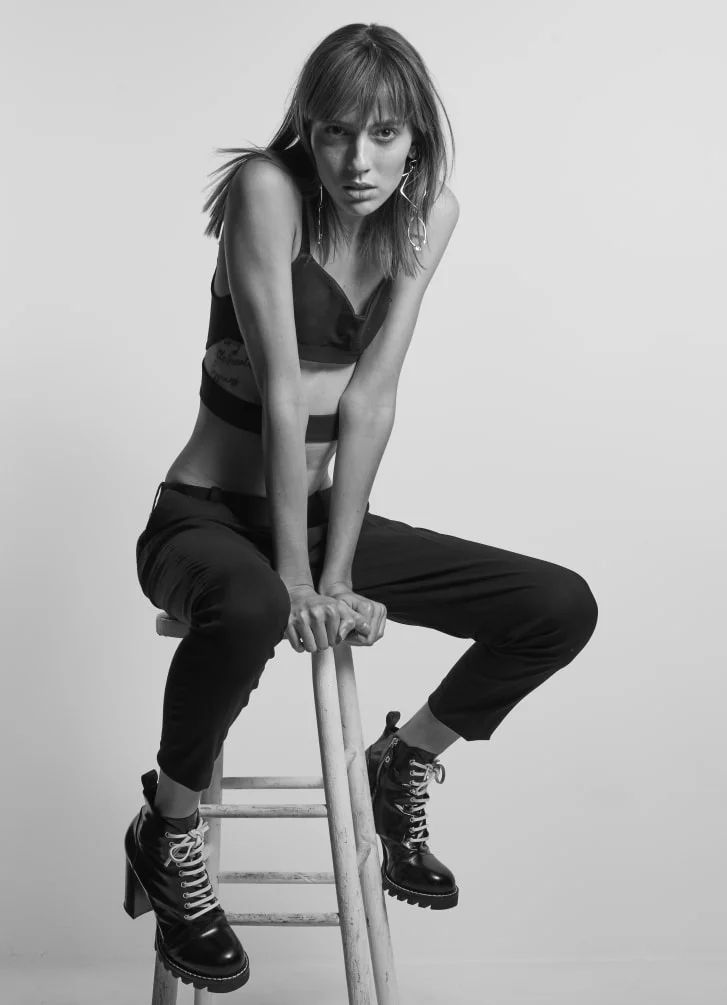Burberry's Christopher Bailey Cements Support For LGBTQ Rights In Final Show As Creative Director
/London delivered its predictable grey drizzle for Burberry's Christopher Bailey's final collection on February 17, 2018, after 17 years with the iconic brand. Vogue's Sarah Mower sat down with Bailey for a poignant talk about his past, present and future. Bailey also spoke with Elizabeth Paton of the NY Times.
Bailey dedicated his final collection to LGBTQ rights, ending his Burberry reign under a rainbow coalition of colored lights and a limited-edition rainbow-coated version of the iconic signature Burberry plaid. Three important charities -- The Trevor Project, The Albert Kennedy Trust, and the ILGA -- dedicated to LGBTQ rights worldwide are beneficiaries of the event.
In a statement to WWD, Bailey explained: “My final collection here at Burberry is dedicated to — and in support of — some of the best and brightest organizations supporting LGBTQ youth around the world. There has never been a more important time to say that in our diversity lies our strength, and our creativity.”
Credit: Teddy Quinlivan by Ace Amir (via Women Management)
When model Teddy Quinlivan identified herself as a transgender model in a September 2017 CNN exclusive, she was prompted by Donald Trump and his Christian conservatives to get vocal. Discovered by Louis Vuitton's creative director Nicolas Ghesquière in 2015, Teddy was motivated to reveal her trans background as she watched the "amazing progression under the Obama administration" face a rollback by Trump.
"There's been violence against transgender people -- particularly transgender women of color -- since before I even knew what transgender was. I just felt a great sense of urgency. I'm very fortunate to be in (a) position (that) I never really thought I would be. It's really important to take advantage of a time like this."
When asked if Quinlivan would say that her decision to come out is rooted in politics, or something more personal? "I think the personal is political," she replied. "It's political, but I'm also doing it for myself. I was ready to come out, but I think the times we live in elevated the sense of importance and urgency."
Besides Ghesquière, Teddy also had the support of designer Marc Jacobs who wrote: "I respect, admire and support Teddy's decision to come out as transgender. Now more than ever it is vital that we pledge our allegiance to the LGBT community and use our voices to encourage and inspire acceptance, equality, understanding and love."
Teddy was also supported in her decision by model Hanne Gaby Odiele, who is an advocate for people who have grown up intersex. When the Belgian model was only two weeks old, an infection put her in a hospital. In a moment of total shock for her parents, blood tests revealed that their daughter suffered from androgen insensitivity syndrome (AIS). Hanne Gaby was genetically male, with one X and one Y chromosome, but she was resistant to hormones or androgens. Hanne was born with internal testes, and without a uterus or ovaries.
Vogue explained: "Intersex is actually an umbrella term referring to more than 30 different conditions in which a person is born with a variation in sex anatomy. For decades, the overwhelming majority of physicians responded to intersex babies by rushing them into surgery. Ilene Wong, M.D., a urologist who has treated intersex adults, says that as of the last several years “the whole landscape is finally changing as people are becoming more aware of the consequences. Some things don’t need to be fixed! There are times when there is medical necessity, but almost all of the surgeries are purely cosmetic—and can leave people scarred, unable to have intercourse, and possibly experiencing early menopause.”
Kimberly Zieselman, the executive director of InterACT, an organization with which Odiele is working closely shares a mind-boggling statistic that nearly 2 percent of babies are born intersex — about the same as naturally born redheads.


